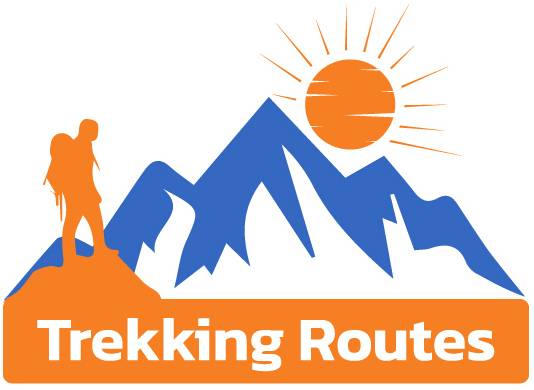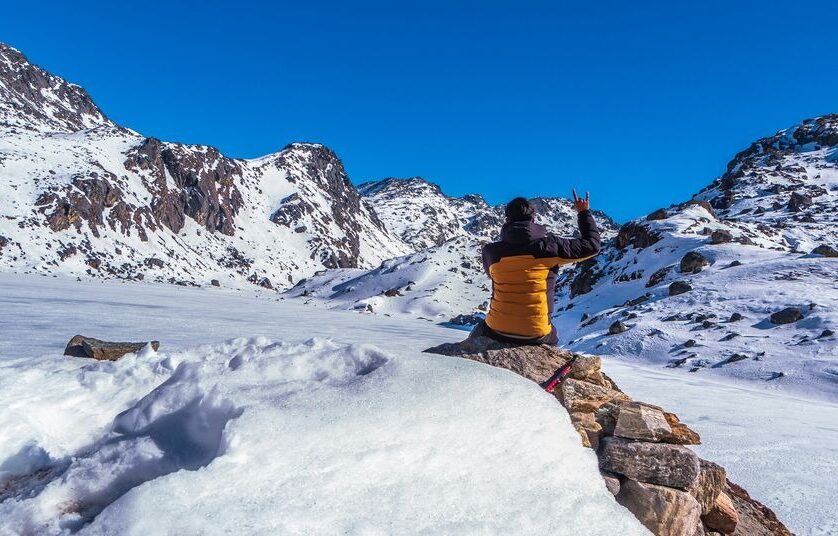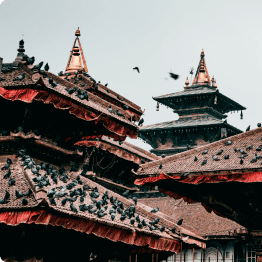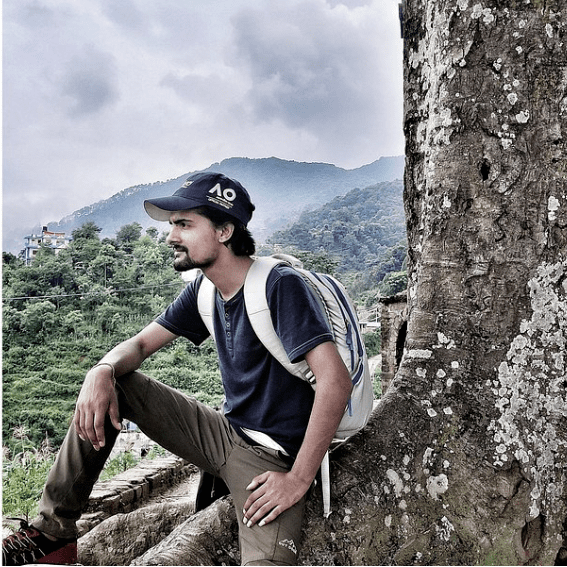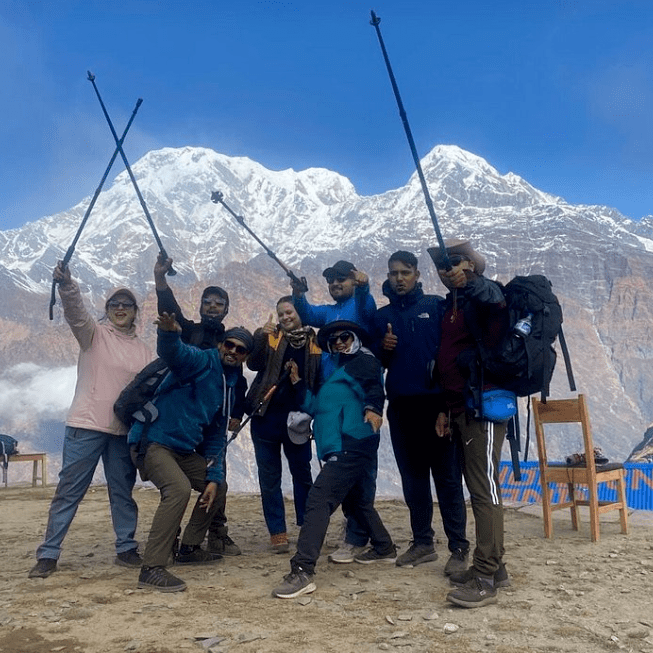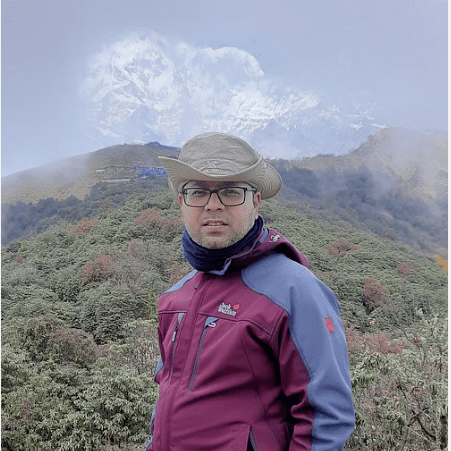Langtang Valley Trek
Good To Know
-
Duration 8 Days
-
Activity Trekking
-
Difficulty Type Moderate
-
Best Season Spring & Autumn
-
Max. Altitude 3870m
-
Accommodation 3 Star Hotel
-
Meal 3 Meal A day
-
Trip Starts Kathmandu
Langtang Valley Trek in Nepal
Let’s embark on a journey of discovery amidst the beauty of Nepal’s Langtang Valley with the 8-day Langtang Valley Trek Package, where every step unveils a new chapter in nature’s grand symphony. This trek, a harmonious blend of scenic wonders and cultural treasures, begins in Syabrubesi, a picturesque village and the gateway to Langtang National Park. Here, amidst the dense embrace of forests and the gentle murmur of the Bhote Koshi River, the soul finds solace in the simple rhythms of mountain life.
As you ascend through forests adorned with the vibrant hues of rhododendrons, the landscape unfolds like a living canvas painted with nature’s brushstrokes. Each turn of the trail reveals breathtaking vistas of snow-capped peaks and alpine meadows, a testament to the timeless beauty of the Himalayas. It is a journey that speaks to the soul, inviting introspection and wonder at the majesty of creation.
At the heart of the trek lies Kyanjin Gompa, an undisturbed sanctuary nestled between high peaks and pristine glaciers. Here, amidst the serenity of mountain life, one finds a sense of peace and reverence for the natural world. The village is a haven of warmth and hospitality, where the Tamang people welcome weary travellers with open arms and kind hearts, their traditions woven into the very fabric of daily life. Beyond Kyanjin Gompa, the trail ascends to dizzying heights, offering panoramic views from vantage points such as Tserko Ri. It is here, amidst the awe-inspiring grandeur of the Langtang Himalayas, that one feels a profound connection to the earth and sky. Surrounded by the timeless beauty of the mountains, the world’s cares seem to fade away, replaced by a sense of wonder and gratitude for the gift of life.
But the Langtang Trek is not just a journey through breathtaking landscapes; it is a pilgrimage into the heart of Nepalese culture and spirituality. Monasteries and chortens line the trail, their ancient stones bearing witness to the prayers of generations past. Here, amidst the fluttering prayer flags and the murmurs of monks, one finds a sense of peace and serenity that transcends words.
Lifestyle in Langtang
The region’s unique geography, nestled within the Langtang National Park, boasts a remarkable variety of flora and fauna. The lush forests of rhododendrons, oak, and pine trees provide diverse wildlife habitats, including Himalayan black bears, red pandas, snow leopards, and various species of birds and butterflies. The alpine meadows and high-altitude pastures are vital grazing grounds for yaks, sheep, and goats, which play a central role in the livelihoods of local communities.
Conservation efforts in Langtang are crucial for preserving its natural beauty and biodiversity. The establishment of Langtang National Park in 1976 marked a significant milestone in protecting the region’s fragile ecosystem and promoting sustainable tourism practices. Conservation initiatives focus on habitat restoration, wildlife monitoring, and community-based ecotourism projects to empower local communities while minimizing environmental impact.
In recent years, the devastating 2015 earthquake and subsequent avalanches have posed significant challenges to the region’s conservation efforts and way of life. However, the resilience and determination of local communities, supported by government and non-profit organizations, have enabled gradual recovery and rebuilding efforts. Sustainable tourism practices, such as responsible trekking and homestay programs, have emerged as key strategies for promoting economic development while preserving Langtang’s natural and cultural heritage.
The lifestyle in Langtang reflects a harmonious coexistence with nature, where traditional practices are interwoven with modern conservation principles. As visitors trek through the picturesque valleys and towering mountains of Langtang. They are invited to experience the rich tapestry of culture, history, and biodiversity that defines this enchanting region. By embracing sustainable tourism and fostering a deeper appreciation for the interconnectedness of all living beings. Langtang Vally continues to inspire and captivate adventurers from around the world. Some highlights of the trip include:
- Stunning alpine landscapes
- Rich cultural immersion with Tamang people
- Kyanjin Gompa village
- Panoramic views from Tserko Ri
- Encounter rare wildlife
- Scenic trails alongside the Bhote Koshi River
- Opportunity for spiritual reflection
Explore the highlights of the Langtang Valley Trek.
Nepal’s First Himalayan National Park
The 1710 sq. km Langtang National Park, Nepal’s first Himalayan national park, preserves a natural and cultural heritage treasure trove. The park has diverse ecosystems, including dense forests, alpine meadows, and towering peaks.
Visitors can encounter rare wildlife such as Himalayan tahrs, red pandas, and various bird species. The park also harbours sacred sites, ancient monasteries, and traditional villages. It also offers a glimpse into the region’s rich cultural tapestry. Langtang National Park is a sanctuary for biodiversity and spiritual significance.
The glacier of Langtang Valley
The Valley of Glaciers” is another name given to Langtang Valley because of several breathtaking glaciers. The glaciers of Langtang Valley, situated at altitudes exceeding 4,500 meters, are majestic remnants of ancient ice sculpted by time. Carving through the rugged terrain of the Himalayas. These icy giants stand as silent sentinels, bearing witness to the flow of the ages.
Kyanjin Gompa Cheese Factory
Tucked away at an altitude of 3800m in the serene village of Kyanjin Gompa lies a charming cheese factory. Where the art of traditional cheese-making comes to life. Set against the backdrop of snow-capped mountains, this hidden gem offers a unique culinary experience. Visitors can also savour the rich flavours of locally produced cheese while basking in the mountain’s embrace.
Tserko Ri
Towering against the village of Kyanjin Gompa, Tserko Ri is a panoramic viewpoint offering breathtaking Langtang Himalayan vistas. As the first light of dawn kisses the snow-capped peaks, trekkers are treated to a spectacle of nature’s beauty. With hues of pink and gold painting the sky in a mesmerizing display.
Tamang Heritage Trail
Delve into the rich cultural tapestry of the Langtang region with a journey along the Tamang Heritage Trail. This ancient trade route winds through quaint villages, terraced fields, and sacred monasteries. Moreover, it offers glimpses into the timeless traditions and warm hospitality of the Tamang people
Itinerary
-
Accommodation 3 Star Hotel
-
Max Altitude 2030m
-
Meal All Meal
We begin early from Kathmandu, eager for the adventure ahead. As we traverse the winding roads to Syabrubesi, every turn unveils breathtaking vistas of terraced fields, quaint villages, and meandering rivers, fueling our excitement. Finally, we reach Syabrubesi, our starting point. Here, with our hearts pounding, we settle in for the night, getting ready for the exciting trek that begins tomorrow.
-
Accommodation Guest House or Tea House
-
Max Altitude 2380m
-
Meal all meal
We start our trek by walking uphill through lush forests filled with colorful rhododendron flowers and tall bamboo trees. Spanning gushing rivers and streams via suspenseful suspension bridges, we embrace the thrill of the wild. When the day ends, we reach Lama Hotel, a cozy haven nestled amidst the untamed wilderness. Here, surrounded by the serenity of nature’s embrace, we retire for the night, our hearts ablaze with anticipation for the adventures that lie ahead.
-
Accommodation Tea House
-
Max Altitude 3430m
-
Meal all meal
As we press onward, the verdant forests envelop us in their embrace, concealing hidden wonders at every turn. Waterfalls serenade our journey, their melody echoing through the valleys. Arriving at Langtang Village, we’re greeted by the warmth of the Tamang people, their vibrant culture painting the village streets. With each step, we delve deeper into this enchanting settlement, captivated by its charm and nestled beneath the watchful gaze of towering peaks. Tonight, we rest here amidst the whispers of the mountains.
-
Accommodation Tea House or Guest House
-
Max Altitude 3870m
-
Meal 3 meal a Day
We start with an exhilarating trek along a scenic trail, feasting our eyes on the majestic Langtang range. Passing by yak pastures and quaint stone houses, we soak in the rugged beauty of the Himalayan landscape. Greeted by breathtaking views of the Himalayas, we reach a sacred monastery, Kyanjin Gompa, we find it amidst snow-capped peaks, invoking a sense of awe and wonder. Our overnight stay in Kyanjin Gompa offers a sanctuary where serenity and spirituality intertwine, enveloping us in the essence of adventure.
-
Accommodation Tea House
-
Max Altitude 3870m
-
Meal 3 meal a Day
On Day 5, we embrace the altitude and dive deeper into the wonders of Kyanjin Gompa. We kick off with an exhilarating hike to Tserko Ri, reaching for the sky at 5,000 meters, where the Langtang Himalayas paint a breathtaking panorama. Then, we satisfy our taste buds with Himalayan cheese straight from the local factory, indulging in its rich flavors. With hearts full of adventure, we venture to explore nearby glaciers, immersing ourselves in the serene majesty of the high-altitude landscape. As the day winds down, we nestle into our accommodations in Kyanjin Gompa, surrounded by the awe-inspiring beauty of the mountains.
-
Accommodation Tea House or Guest House
-
Max Altitude 2560m
-
Meal 3 meal a Day
We descend from the heights of Kyanjin Gompa, tracing our path along the scenic trail that winds through the enchanting forest. With each step, we soak in the sights and sounds of nature, feeling the pulse of the wilderness echo around us. As we arrive at Lama Hotel, a sense of accomplishment fills our hearts, knowing that we’ve conquered yet another day of adventure. We unwind and recharge for the journey ahead, ready to embrace the serenity of the night under the starlit sky.
-
Accommodation Guest House or Tea house
-
Max Altitude 2030m
-
Meal 3 Meal a Day
As we descend through the whispering forests and past quaint villages, we cherish the final moments in the embrace of the Langtang Valley. Crossing each suspension bridge, we savor the fleeting glimpses of the majestic landscape. Arriving back in Syabrubesi, we pause to celebrate the completion of our journey, feeling a bittersweet wistfulness settle upon us. The night is spent in Syabrubesi, where we reminisce about the unforgettable memories forged along the trail, knowing that the Langtang Valley will forever hold a special place in our hearts.
-
Accommodation 3 Star Hotel
-
Max Altitude 1400m
-
Meal Breakfast and Lunch
On Day 8, we bid farewell to Syabrubesi, our hearts heavy with the bittersweet weight of departure. As we embark on the scenic drive back to Kathmandu, we are reminded of the trails we’ve conquered and the landscapes we’ve embraced. Arriving in Kathmandu by afternoon, we conclude our adventure with a sense of fulfillment and gratitude, forever carrying the spirit of the Himalayas within our souls.
Inclusions/Exclusions
What's Included
- Private car transportation for airport transfers.
- Enjoy two nights’ stay with breakfast provided at a 3-star hotel in Kathmandu.
- Travel between Kathmandu and Sybrubensi via public bus.
- Indulge in three hearty meals accompanied by tea or coffee (breakfast, lunch, and dinner) throughout the trek.
- Stay warm with provided down jackets and sleeping bags during the trek.
- Receive complimentary Nepal Hiking Team T-shirt, trekking map, and a certificate to commemorate your trip achievements.
- Energize with snacks of fresh seasonal fruits along the trekking route.
- Rest comfortably in the best available twin-sharing lodges during the trekking journey.
- Conveniently carry your belongings in a duffle bag tailored for trekking purposes.
- Ensure entry with Langtang National Park Permit fees included in the package.
- Stay prepared with a well-equipped first aid kit available throughout the journey.
- Benefit from the expertise of a knowledgeable, supportive, and amiable guide, along with porters (1 porter for every two trekkers), inclusive of their food, lodging, wages, and gear, alongside accident insurance coverage for all staff.
- All government taxes and office service charges are covered for your convenience
What's Excluded
- Nepal entry visa fee (you can get it when you arrive at Tribhuwan International Airport in Kathmandu).
- Travel insurance (it’s required).
- Your international flights and getting to and from the airport.
- Porter Cost. It costs USD 160 for each porter, and one porter can carry bags for two trekkers. The porter can carry up to 20-22 kilograms.
- Cost of your accommodation and meals in Kathmandu.
- Remember to budget for drinks, snacks, and anything else you want to buy for yourself.
- Keep in mind additional expenses like laundry, phone calls, hot showers, and internet fees.
- Tips for your guide and porter for their help.
- Be prepared for any extra costs that aren’t included in the package.
Trip Map
Langtang Valley Trek Map
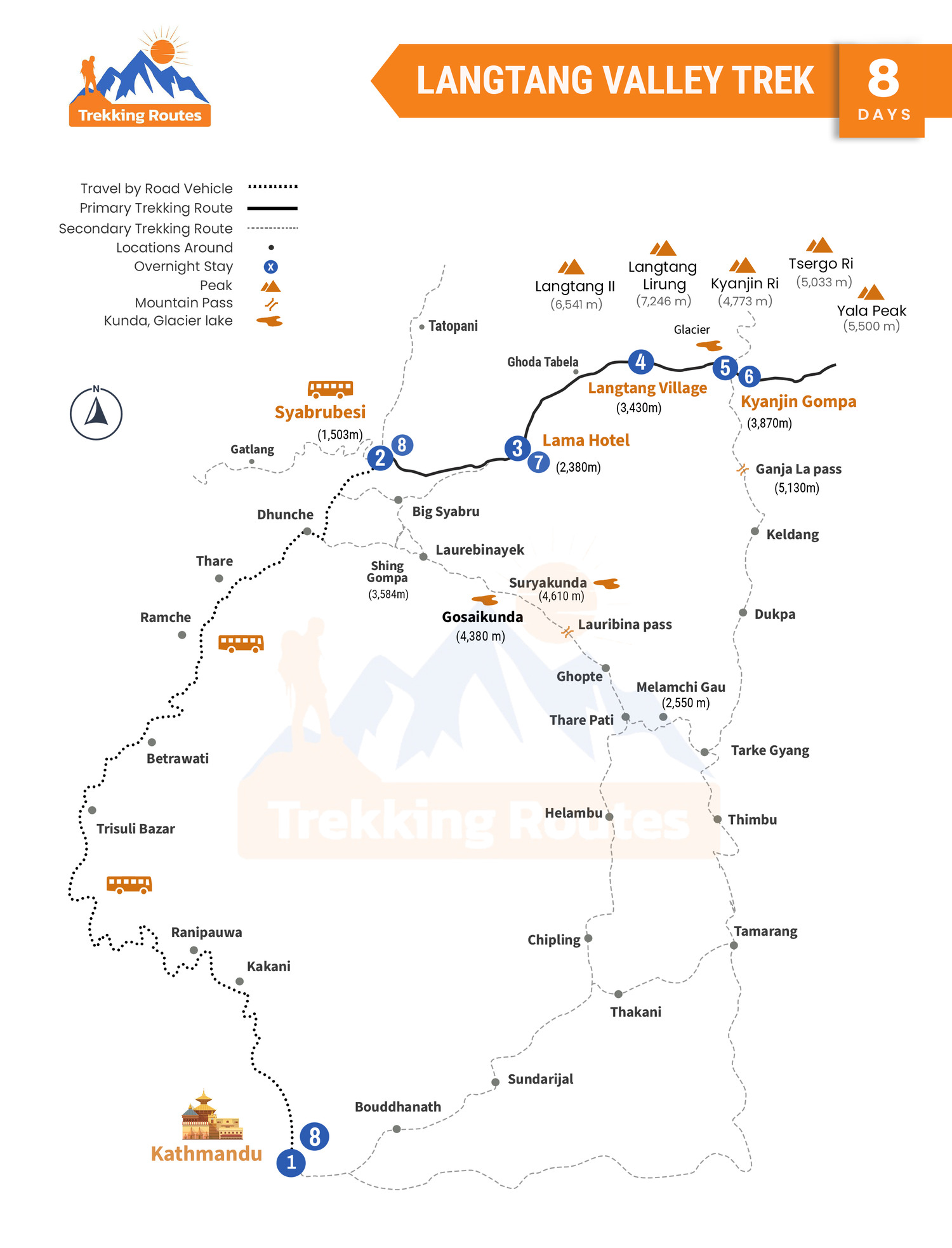
Langtang Valley Trek Essential Info
- What to pack
Sturdy Backpack: Opt for a durable backpack with adjustable straps and ample capacity to comfortably carry all your essentials. Look for features like padded shoulder straps and a supportive hip belt for added comfort during long treks.
Hiking Boots: Invest in high-quality hiking boots that provide excellent ankle support and feature a sturdy sole with reliable traction. Choose boots that are waterproof and breathable to keep your feet dry and comfortable in various terrain and weather conditions.
Clothing Layers: Pack a versatile selection of clothing layers to adapt to changing temperatures and weather conditions. Include moisture-wicking base layers, insulating mid-layers such as fleece jackets or sweaters, and waterproof outer shells to protect against rain and wind.
Sleeping Bag: Bring a warm sleeping bag rated for cold temperatures to ensure a comfortable night’s sleep in mountain lodges or campsites along the trekking route. Consider lightweight and compact options that can easily fit into your backpack.
Trekking Poles: Enhance your stability and reduce strain on your joints by using trekking poles during your trek. Look for adjustable poles with ergonomic grips and durable construction to provide support on uneven terrain.
First Aid Kit: Pack a comprehensive first aid kit containing essential supplies such as bandages, antiseptic wipes, pain relievers, blister treatment, and any personal medications. Consider including items specific to altitude sickness prevention and treatment.
Sun Protection: Protect yourself from the sun’s harsh rays by wearing a wide-brimmed hat, sunglasses with UV protection, and applying sunscreen with a high SPF. Don’t forget to cover exposed skin, including your face, neck, and hands.
Headlamp or Flashlight: Ensure visibility during early morning hikes or evening walks by carrying a reliable headlamp or flashlight with extra batteries. Choose lightweight and waterproof options with adjustable brightness settings for added versatility.
Personal Toiletries: Pack travel-sized toiletries to maintain personal hygiene during your trek. Essentials include toothpaste, toothbrush, biodegradable soap, hand sanitizer, and wet wipes. Opt for compact and lightweight containers to save space in your backpack.
Snacks and Energy Foods: Carry lightweight, high-energy snacks such as nuts, dried fruits, energy bars, and chocolate to fuel your trekking adventures and provide quick energy boosts on the trail. Choose non-perishable options that won’t weigh you down.
Cash and Credit Cards: Ensure you have sufficient cash in the local currency for purchasing meals, drinks, and souvenirs along the trekking route, as ATM availability may be limited. Additionally, bring a credit card for emergencies or larger expenses that may arise.
Camera or Smartphone: Capture unforgettable moments and stunning landscapes with a camera or smartphone equipped with a reliable waterproof case or cover. Don’t forget to bring extra memory cards and batteries to ensure you never miss a shot.
Towel and Toiletry Bag: Pack a lightweight, quick-drying towel and a toiletry bag to keep your personal items organized and accessible during the trek. Consider microfiber towels that are compact and absorbent for maximum convenience.
Emergency Contact Information: Write down emergency contact numbers, including local authorities, trekking agencies, and embassy or consulate details, and keep them readily accessible. Share your itinerary with trusted contacts and check-in regularly to ensure your safety throughout the trek.
- Location and Overview: The Langtang Trek offers a captivating journey through the Langtang Valley, often referred to as the “Valley of Glaciers.” Situated within the Langtang National Park, this trek presents a blend of natural beauty and cultural heritage, making it a popular choice for trekkers seeking an authentic Himalayan experience.
- Duration and Difficulty: Spanning approximately 7 to 10 days, the Langtang Trek is renowned for its moderate difficulty level. Trekkers navigate through varying terrain, including forested trails, rocky paths, and high mountain passes. While prior trekking experience is beneficial, individuals with a reasonable level of fitness can successfully complete the journey.
- Permits and Regulations: To access the Langtang National Park, trekkers must obtain the necessary permits. These include the Langtang National Park entry permit and the TIMS card, which help support conservation efforts and ensure trekkers’ safety. Obtaining permits can be arranged through authorized trekking agencies or at park entry points.
- Langtang National Park Entry Permit: This permit grants access to the Langtang National Park, a protected area renowned for its biodiversity and stunning landscapes. The permit fee contributes to park maintenance, conservation initiatives, and community development projects. Trekkers can obtain the Langtang National Park entry permit from the Nepal Tourism Board office in Kathmandu or at designated entry points along the trekking route.
- Trekkers’ Information Management System (TIMS) Card: The TIMS card is a mandatory registration system designed to enhance the safety and security of trekkers in Nepal. It provides crucial information about trekkers’ itineraries, allowing authorities to monitor their movements and respond promptly in case of emergencies. The TIMS card also helps generate data for tourism statistics and infrastructure development. Trekkers can obtain the TIMS card through authorized trekking agencies or the Nepal Tourism Board office in Kathmandu.
- Accommodation: Along the trekking route, trekkers find a range of accommodation options, from rustic tea houses to cozy lodges. These establishments offer basic amenities such as beds, blankets, and communal dining areas where trekkers can enjoy hearty meals and connect with fellow adventurers. Staying in local lodges provides an authentic insight into the region’s hospitality and way of life.
- Food and Water: Trekkers refuel with nourishing meals served at tea houses and lodges along the route. From traditional Nepali dal bhat (rice and lentils) to international favorites, there’s a diverse selection to satisfy every palate. To stay hydrated, trekkers carry refillable water bottles and treat water from natural sources using purification methods to prevent waterborne illnesses.
- Altitude Sickness: As trekkers ascend to higher altitudes, they must be vigilant for signs of altitude sickness, such as headaches, nausea, and shortness of breath. Acclimatization days are strategically incorporated into trekking itineraries, allowing individuals to adapt gradually to reduced oxygen levels. Hydration, adequate rest, and listening to the body’s cues are crucial for preventing altitude-related issues.
- Weather and Best Time to Trek: The Langtang Trek is best undertaken during the spring and autumn seasons when the weather is favorable, and the trails are at their most scenic. Spring brings blooming rhododendron forests and mild temperatures, while autumn offers clear skies and stunning mountain views. Trekkers should avoid the monsoon season (June to August) due to heavy rainfall and potential landslides.
- Cultural Highlights: Throughout the trek, trekkers encounter the rich cultural tapestry of the Langtang region. From traditional Tamang villages to Buddhist monasteries adorned with prayer flags, each cultural landmark offers a glimpse into the spiritual heritage of the Himalayas. Engaging with local communities fosters cultural exchange and deepens appreciation for the region’s diverse customs and traditions.
- Emergency Preparedness: Trekkers prioritize safety by preparing for emergencies before setting out on the trail. This includes carrying a well-equipped first aid kit, familiarizing oneself with altitude sickness symptoms, and having emergency contact information accessible. Comprehensive travel insurance provides peace of mind, covering medical evacuation and unforeseen circumstances that may arise during the trek.
FAQs
Yes, the Langtang Valley Trek is considered moderate in difficulty, making it suitable for trekkers with a basic level of fitness and trekking experience. However, it's essential to be prepared for uphill climbs, rocky trails, and varying weather conditions.
While the maximum altitude reached on the Langtang Valley Trek is lower compared to other treks in Nepal, such as the Everest Base Camp or Annapurna Circuit, trekkers may still experience symptoms of altitude sickness. It's crucial to acclimatize properly, stay hydrated, and be aware of any signs of altitude-related illness.
Trekkers should always stay hydrated, use sunscreen, wear appropriate clothing and footwear, and be mindful of their physical limits. It's also advisable to carry a first aid kit, emergency contacts, and a satellite phone for communication in case of emergencies.
The best time to do the Langtang Valley Trek is during the spring (March to May) and autumn (September to November) seasons. During these months, the weather is generally stable, with clear skies and moderate temperatures, making for ideal trekking conditions and stunning views of the surrounding mountains.
Yes, the Langtang region is home to diverse wildlife, including Himalayan Thar, Red Pandas, and various bird species. Trekkers may have the opportunity to spot these animals along the trail, particularly in the forested areas and higher elevations of the trek.
Accommodation along the Langtang Valley Trek consists of teahouses and guesthouses located in villages along the trail. These establishments offer basic but comfortable lodging with shared facilities. Meals typically include a variety of Nepali and Tibetan dishes, such as dal bhat (rice and lentils), noodles, and Tibetan bread.
While it's technically possible to do the Langtang Valley Trek independently, hiring a local guide is highly recommended, especially for those unfamiliar with the area. A guide can provide valuable assistance with navigation, cultural insights, and safety, enhancing the overall trekking experience.
Yes, the Langtang region is inhabited by Tamang and Sherpa communities, known for their rich cultural heritage and traditions. Trekkers have the opportunity to visit local villages, monasteries, and yak herder settlements, gaining insight into the unique way of life in the Himalayan mountains.
The starting point of the Langtang Valley Trek is typically reached by a scenic bus ride from Kathmandu to Syabrubesi, the gateway to the Langtang region. Alternatively, private jeeps or hired vehicles can also be arranged for more flexibility and convenience.
Yes, the Langtang Valley Trek can be combined with other treks in the area, such as the Gosainkunda Trek or Helambu Trek, for a longer and more varied trekking experience. Additionally, activities such as mountain biking, bird watching, and hot spring visits can be enjoyed in the Langtang region. However, this package doesn't provide the option due to time restraints.
Yes, trekkers can consider side trips to places like Tserko Ri or Kyanjin Ri for panoramic mountain views or to explore nearby glaciers and high-altitude lakes, adding an extra layer of adventure to the trek.
Yes, the Langtang region is dotted with Buddhist monasteries, chortens (stupas), and prayer flags, which hold religious significance for the local communities. Trekkers are encouraged to respect these sites and observe any cultural customs or rituals.
The Langtang National Park is home to diverse flora and fauna, including endangered species like the red panda. Trekkers need to obtain permits to enter the park, which can be arranged through registered trekking agencies or at park entrance points.
While mobile phone reception and internet connectivity may be limited or non-existent in remote areas, some villages along the trekking route may have access to basic communication services. It's advisable to inform family and friends of any potential communication gaps.
Trekkers can explore off-the-beaten-path destinations like the sacred lakes of Gosainkunda, the Tamang heritage trail, or the remote villages of Langtang valley's upper reaches, offering a deeper insight into the region's culture and natural beauty.
Yes, there are various initiatives aimed at promoting sustainable tourism practices, such as waste management, conservation projects, and community-based tourism initiatives. Trekkers are encouraged to support these efforts by minimizing their environmental impact and respecting local customs.
Trekkers should be prepared for sudden weather changes, including rain, snow, and high winds, especially at higher altitudes. Additionally, the region is prone to natural disasters such as landslides and avalanches, so it's essential to stay informed and heed any warnings from local authorities.
Yes, some trekking agencies and non-profit organizations offer volunteering opportunities in the Langtang region, such as teaching English in local schools, participating in conservation projects, or supporting community development initiatives, providing trekkers with a chance to give back to the local community.
Yak farming plays a crucial role in the livelihoods of communities in the Langtang region, providing essential resources such as milk, meat, and wool. Trekkers may encounter yaks along the trail, and some villages offer opportunities for yak cheese tasting or learning about traditional yak husbandry practices.
